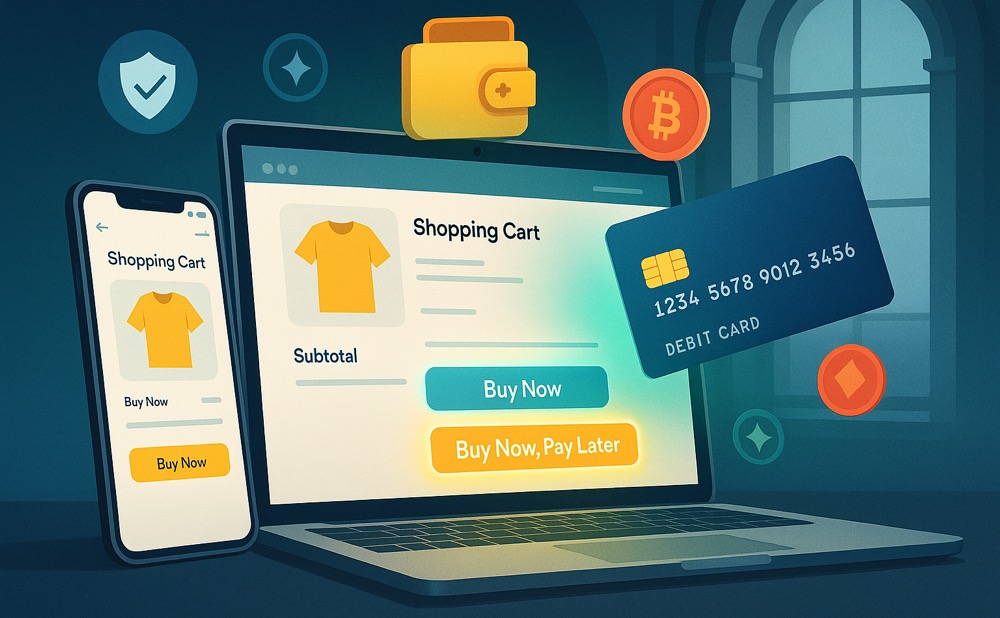Embedded finance, the integration of financial services within non-financial platforms, is transforming how consumers interact with money.
According to a 2024 McKinsey report, embedded finance revenues in Europe could exceed €100 billion by 2030. For online retailers, it presents a massive opportunity to increase revenue, loyalty, and customer satisfaction.
Rather than sending customers to a bank, embedded finance allows retailers to offer banking-like services within their own apps and websites.
Companies like Shopify and Amazon are already embedding payments and lending into their platforms, making financial services a native part of the customer journey. Think: Buy Now, Pay Later, product warranties, loyalty wallets, and branded debit cards. These tools have the potential to increase checkout conversion, reduce cart abandonment, and boost average order value.
For smaller retailers, embedded finance has the potential to level the playing field. With APIs from fintech firms like Stripe, Affirm, Marqeta, and Unit, you don’t need a banking license to offer flexible payment options or create financial touch points.
Embedded finance also strengthens customer loyalty and increases switching costs. Retailers that offer branded credit or debit cards, like Apple does with its Apple Card or Starbucks with its stored-value cards, create financial incentives for customers to keep coming back. These offerings deepen engagement and allow retailers to collect valuable spending data that can inform product and marketing decisions.
However, implementing embedded finance requires thoughtful strategy.
Will the new features simplify the customer journey or add complexity?
What are the risks of introducing lending or savings tools under an existing brand?
Partnering with licensed financial entities mitigates some of the legal and regulatory challenges, but customer trust remains a high-stakes consideration. Compliance risks are also significant, with financial regulators around the world paying close attention to fintech partnerships and consumer data protection practices.
But success in embedded finance isn’t just about plugging in a payments API. Retailers need to think holistically about the customer experience. For instance, Klarna’s sleek BNPL interface doesn’t just help users split payments, it also reinforces brand loyalty, improves retention, and creates a seamless purchase journey that has the potential to enhance customer satisfaction.
Beyond BNPL, the possibilities for embedded finance are growing. Embedded insurance lets retailers offer coverage at the point of sale e.g. travel insurance or device protection. Embedded investing and retirement tools could one day sit alongside wellness or lifestyle brands. Even embedded crypto wallets are becoming more common for retailers accepting digital assets or offering rewards in crypto.
From a strategic perspective, embedded finance shifts the retailer’s role from transaction processor to financial enabler. This not only unlocks new revenue streams through interchange fees or interest margins, but can also strengthen customer lifetime value (CLV) through more personalized engagement.
For successful implementation of embedded finance, speed and scalability are key. Many embedded finance providers offer white-label services that can be deployed quickly, allowing retailers to test features with limited investment. It’s important to start with a focused pilot, such as offering installment payments or a co-branded debit card, and use early data to validate the offering before scaling up.
Risks, of course, remain. Reputational damage from a lending misstep or a poor payment experience can be severe. Retailers must ensure they are not just adding features but designing meaningful, compliant financial experiences. Clear disclosures, transparent pricing, and responsive customer support are must-haves.
Looking ahead, embedded finance will likely become table stakes. Just as mobile optimization went from novelty to necessity, offering embedded payments, credit, and wallets will eventually be expected by consumers, especially Gen Z and Millennials who already manage finances through apps like Cash App, Venmo, or Apple Pay.
Ultimately, embedded finance is about meeting consumers where they are, on platforms they already use and trust. For online retailers, that means owning more of the transaction lifecycle, enhancing the customer experience, and future-proofing their business in a rapidly digitizing economy.
Those who move early, and thoughtfully, will be best positioned to lead in embedded finance.
Zuhair Imaduddin is a Senior Product Manager at Wells Fargo. He previously worked at JPMorgan Chase and graduated from Cornell University.
Image: DALL-E
🔴 Found these ideas useful?
Sharpen your edge
